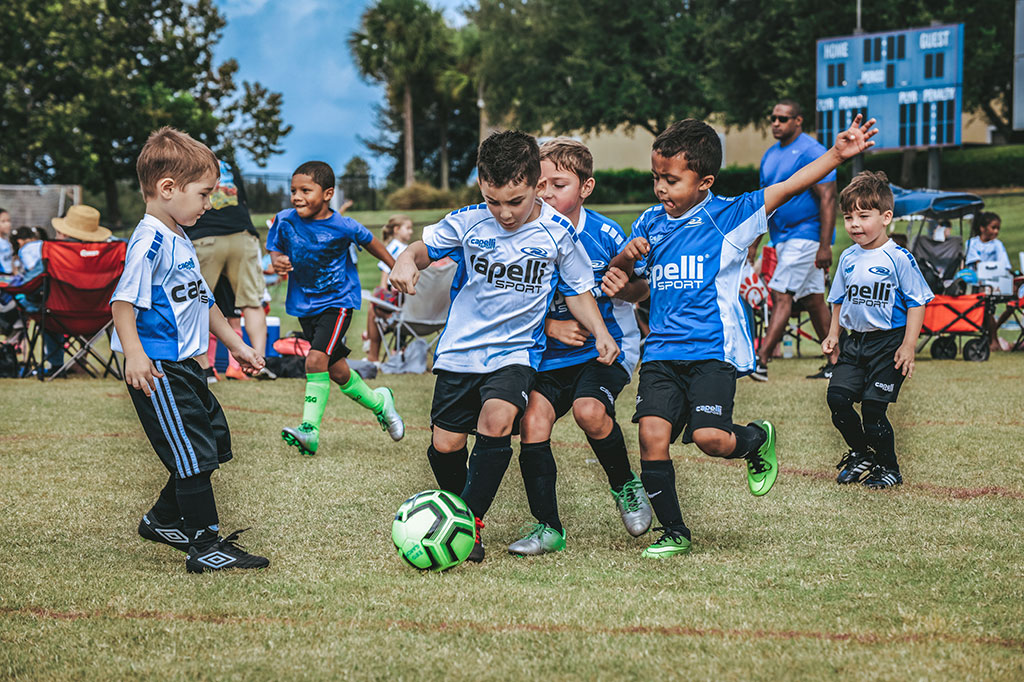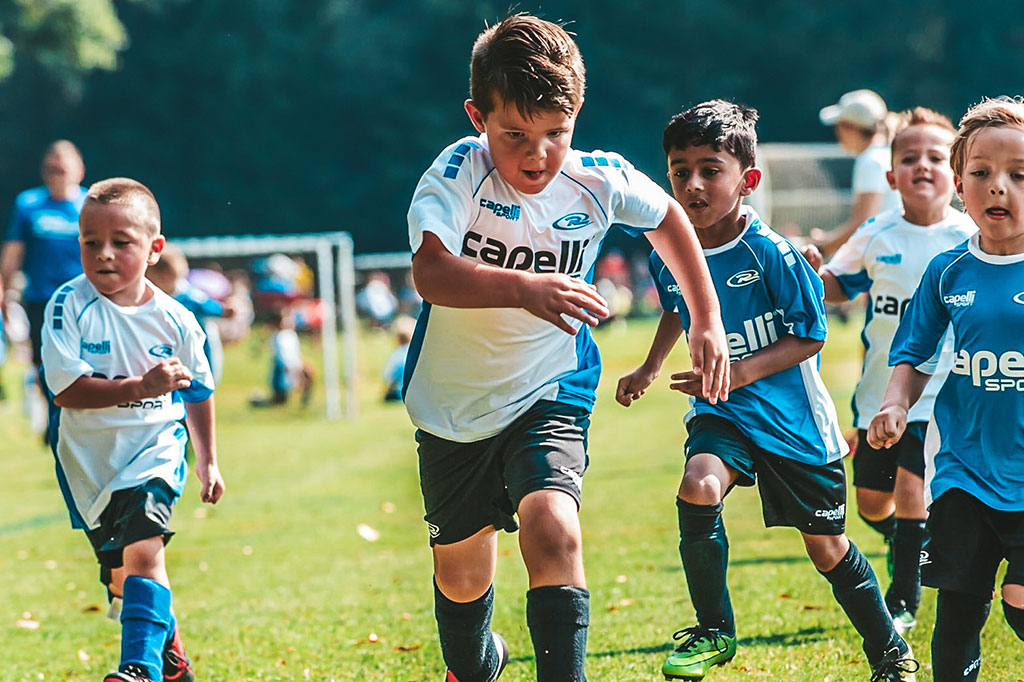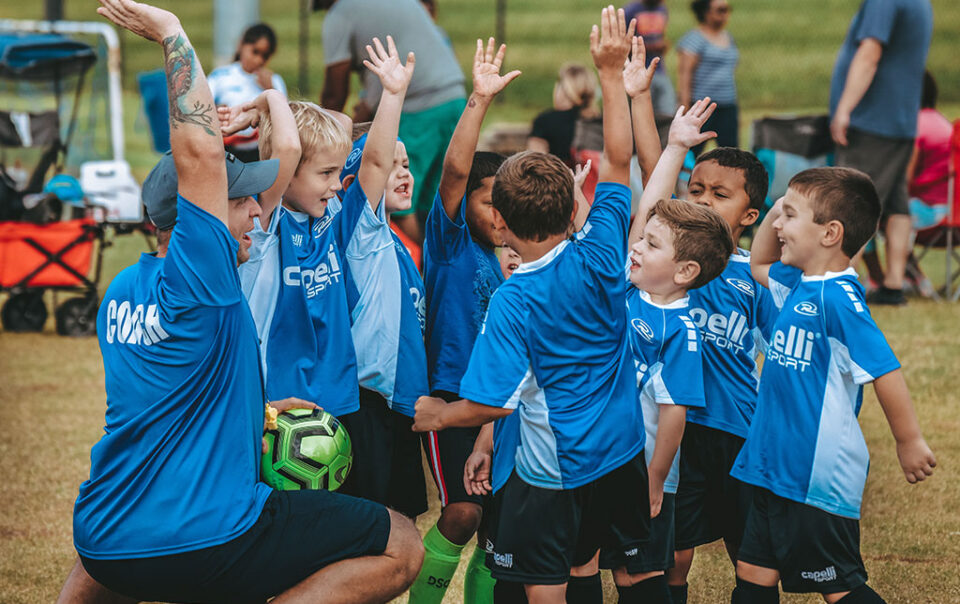This article is a recap of lessons learned from November’s Educational Campaign on Coaching The Micro Division (U6-U8).
Events held and articles shared along November:
| We started this month by reviewing the basics, through the overall yet always fundamental need of understanding age group characteristics and the applications of the Rush Way philosophies. The Rush Way Micro Division Guide was the instrument we used to set these bases. A few days after we had the privilege of deepening our understanding of ‘who we have in front of us‘ by chatting to some world-recognized professionals like Sam Snow & Tom Goodman (Nov 5th) and Pete Sturgess & Kris Van Der Haegen (Nov 12th). From these fundamentals, we dove into the science and application of coaching towards developing growth mindsets (Carol Dweck), as well as learning to distinguish and present external vs internal cues to our athletes towards favoring their learning (Aubrey Watts), and lastly we covered vital tips to develop children into more confident athletes and human beings from world renowned psychologist Carl Pickhardt. |
| As we advanced onto the end of this educational campaign, we shared this article from world-renowned coach educator and former Rush Technical Director John O’Sullivan, in which he presents his reasons to support a Whole-Part-Whole coaching approach for grassroots over a more traditional simple to complex one. Right after, we stepped out of the classroom and right into the field presenting this session, available at The Rush Coaching Manual! |
Lastly, we shared the recording of Grassroots Coaching – Inside The Minds Of Our Little Ones, in which Rush Soccer’s Developmental Director Chris P. was interviewed by Josh Tyler, our CAP Director, to discuss fundamentals of coaching for the age group.
From all of these events and educational opportunities, we put together the following list of fundamental learnings:
1) The objective is to Develop Healthy Players With A Strong Passion For Soccer:
We learnt this through reading the Rush Way Micro Division Guide. It’s FUNdamental to remember that passion arises as an emotional connection that we have with an activity that invokes positive feelings and memories. That’s why we highlight the FUN part. It is our duty as coaches to create an enjoyable environment that allows the player to experience the sport freely, positively, using their imaginations. That is also why, at this stage, we highlight the Core Values Passion, Respect, Safety, and mostly Enjoyment!
“Play is the work of Children” – Maria Montessori.
2) Understand Who’s In Front Of You:
Multiple of our articles and guest speakers highlighted this. Tom Goodman, Sam Snow, Kris Van Der Haegen, Pete Sturgess, and Chris P made a focus on this aspect in their presentations. It’s a ‘me and the ball’ stage, that by the upper end might turn into a ‘me, the ball, and my (one) teammate’, so don’t expect or demand something different, but most importantly remember that this statement goes beyond simply understanding biological and psychological characteristics of the age group. It has to be personalized. Get to know each kid, his background, his personality, what he can and what he can’t do. As Kris Van Der Haegen said: Start by thinking “who’s in front of me?” and “how can I adapt to fulfill the needs of that individual?“. Coaching is a relationship business.
Individualizing coaching in a team setting is one of the skills that great coaches have. And always remember that the game needs to adapt to the child, not the child to the game.
“Players come first – Understanding who they are and what they can do is the most important thing at these age groups” – Tom Goodman.

3) Engage Parents:
This was another point that Sam Snow, Tom Goodman, and Chris P. highlighted. Way too often we see coaches try to isolate themselves from parents. We need to understand that parents are hugely influential and play a key role in the overall experience of the child. Educating parents is of utmost importance. Tom Goodman concretely suggested: Don’t be afraid of the parents, invite them to help you at training sessions, so they learn as well. The more they are around the environment, the more they will understand your perspective. Talk to them at every session and game.
“The adults must understand that children do not usually pass the ball at these age groups. We must include, engage and educate what children can do at these ages” – Tom Goodman.
4) Praise By The Effort And Focus On The Development Of Growth Mindsets:
This might be one of the most important lessons to learn. I can personally relate to it, how along my life I didn’t always have this mentality (a growth mindset) and what an incredible impact it would have had in me as a player and as a person.
Praise by the effort to help your players understand that making mistakes is part of the learning process, and that good performances are not just a reflection of their ability. This will help the players feel courageous about stepping out of their comfort zones to learn new things, instead of risking the feeling of losing an ability status that is part of a self identity perception when we do so. A Study On Praise And Mindsets By Carol Dweck presents this concept brilliantly.
5) Use External Cues In Your Coaching:
Aubrey Watts explained this concept amazingly. Use cues that relate overall actions and movements towards external elements instead of relating them directly to body parts and over-dissecting them. These are more effective and they avoid situations in which the athletes overthink techniques and movements.

6) Create Environments That Are Rich In Decision Making:
Our sessions should provide this framework. As world renowned psychologist Carl Pickhardt shared in his article ‘18 Things To Raise A More Confident Child’: If you do the hard work for your child then they’ll never develop the abilities or the confidence to figure out problems on their own. Parental help can prevent confidence derived from self-help and figuring out on the child’s own. Remember that Performance and Learning are not the same thing. Giving direction might increase immediate performance, but does it favor learning?
“The journey needs to be varied just like the children’s experiences” – Pete Sturgess.
7) Use A Whole-Part-Whole Approach On Your Training Sessions:
We took this from John O’Sullivan’s Article Why Whole Part Whole? And we agree with him. If we are trying to create a rich in decisions, playful, enjoyable environment that includes and considers the difference between technique and skill, we highly recommend to use a WPW approach (also frequently referred to as Play-Practice-Play or PPP).
Thank you coach for all the effort and commitment you put in furthering your education and for accompanying and letting us lead you in that endeavour. We wrap this educational campaign quoting one of our own:
As our great Chris P says:
“Remember that children only get one childhood, so it’s our duty to make it as memorable as possible” – Chris P.
“As a coach we need to be the loudest when things have gone well!” – Chris P.









